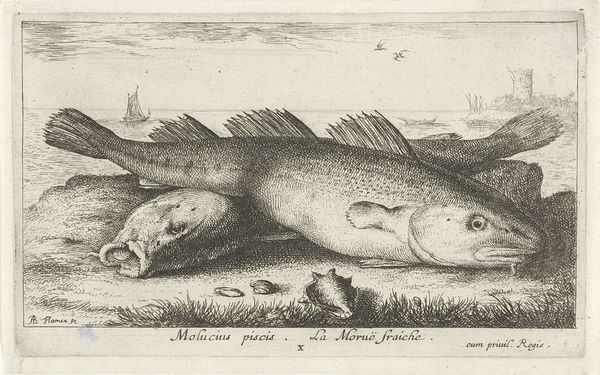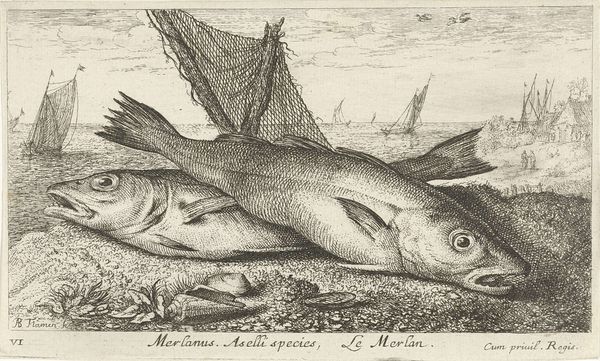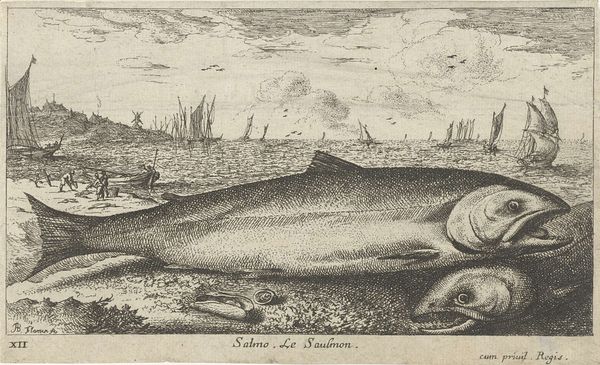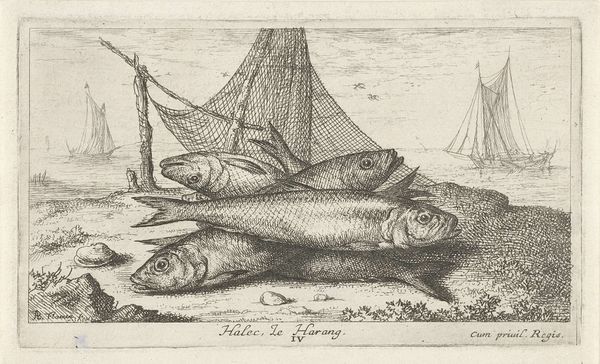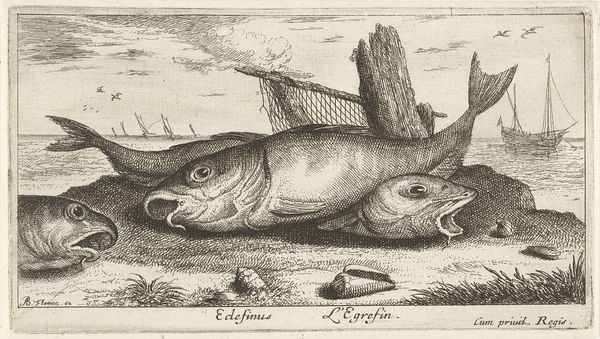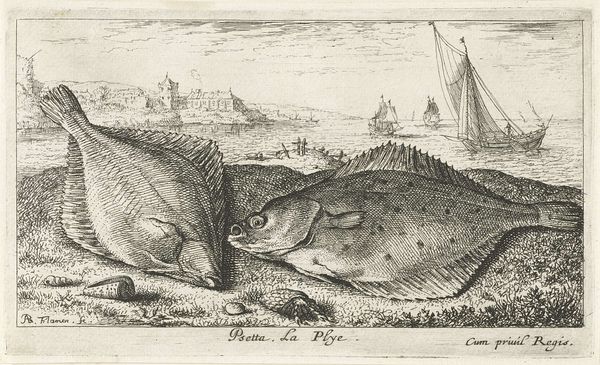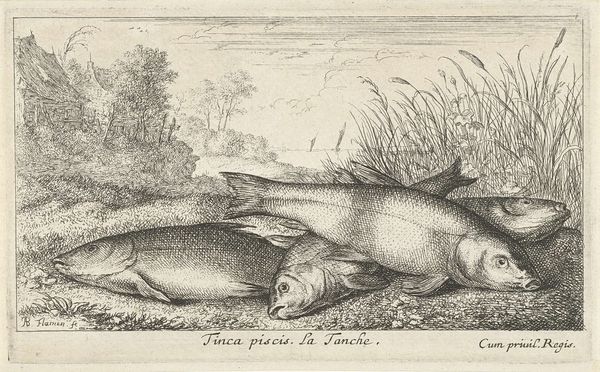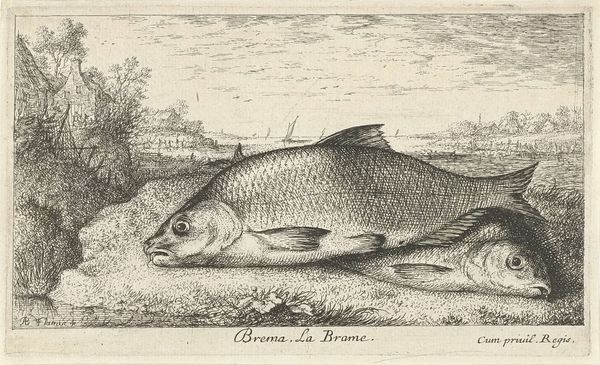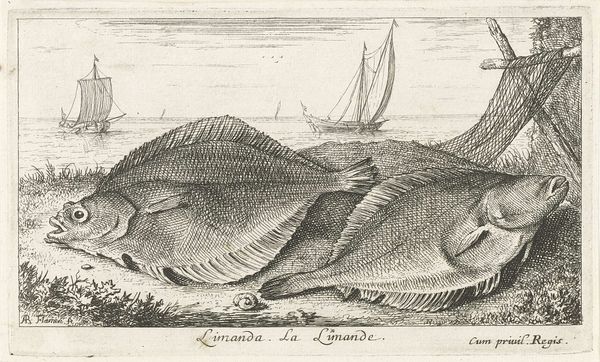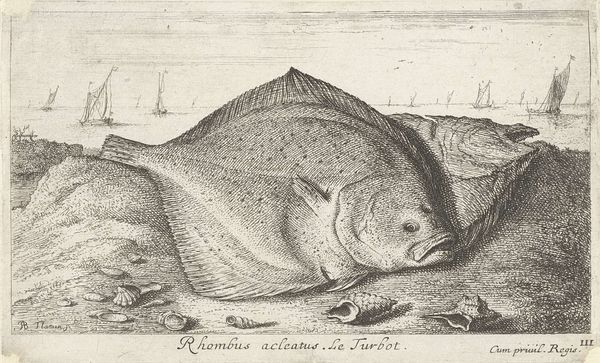
print, engraving
#
baroque
#
dutch-golden-age
# print
#
old engraving style
#
engraving
Dimensions: height 109 mm, width 172 mm
Copyright: Rijks Museum: Open Domain
Editor: So, here we have Albert Flamen’s 1664 engraving, “Twee meivissen op het strand” – Two May Fish on the Beach. The stark contrast between the meticulously detailed fish and the open seascape makes it quite striking, almost unsettling. What do you make of this unusual composition? Curator: I find it fascinating to consider this image through the lens of the Dutch Golden Age and its relationship with natural resources. The prominence given to the fish – these *alosa*, or shad – speaks to their economic and cultural importance. What does it mean to portray them almost as trophies, especially given the backdrop of maritime activity? Editor: A commentary on resource extraction perhaps? It makes me wonder if the artist had any intentions regarding environmental impact. Curator: Precisely! Think about the burgeoning fishing industry during this era. It raises questions about the impact of human activity on marine ecosystems. Was Flamen subtly critiquing overfishing or celebrating Dutch prosperity tied to the sea? Who benefits from these industries? Editor: So it's not simply a still life, but also a potential social statement woven into the composition. Curator: Exactly! It prompts us to ask, whose stories are amplified, and whose are silenced within the dominant narratives of prosperity? This forces us to reconsider historical interpretations. The seeming bounty might hide systemic inequalities or unsustainable practices. What happens when resources run out, for example? Editor: That's given me a completely different way to consider Golden Age art. I thought it was just accurate representation. Curator: It shows that visual art can function as historical documents, laden with complexities about resource ownership, socio-economic systems and even early concerns about sustainability that resonate today. It is all very relevant when considering art's role as both witness and agent of social change.
Comments
No comments
Be the first to comment and join the conversation on the ultimate creative platform.
